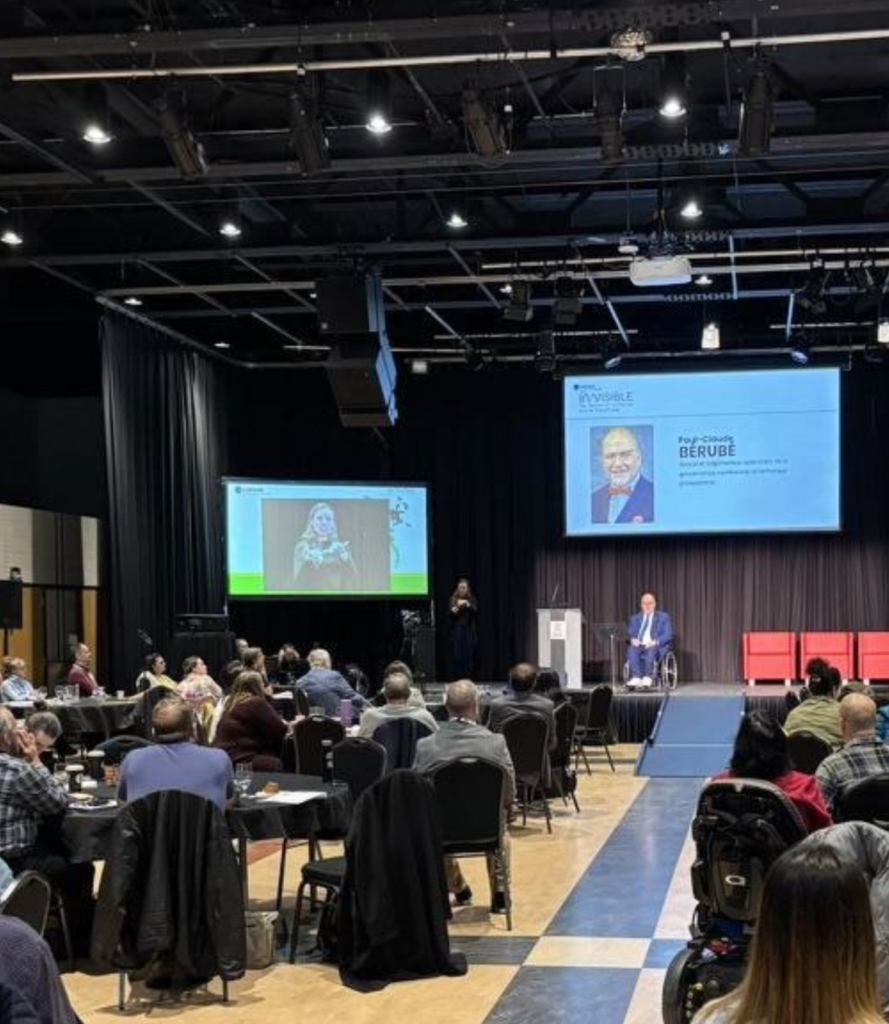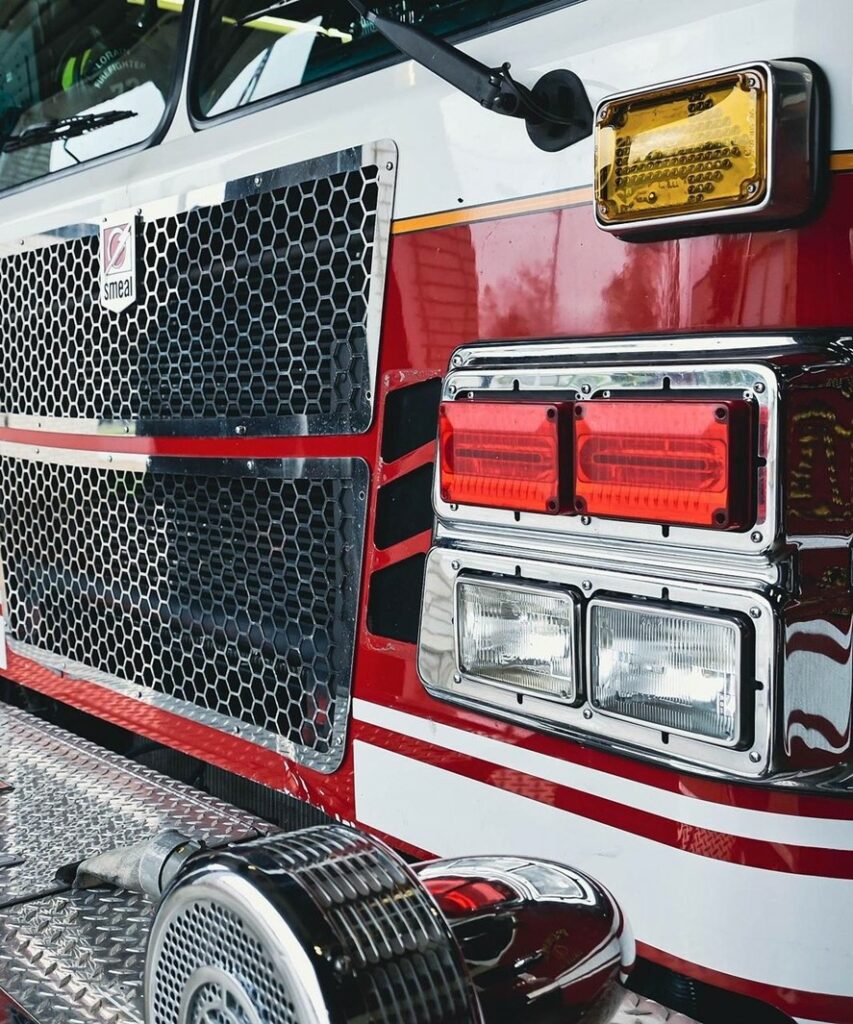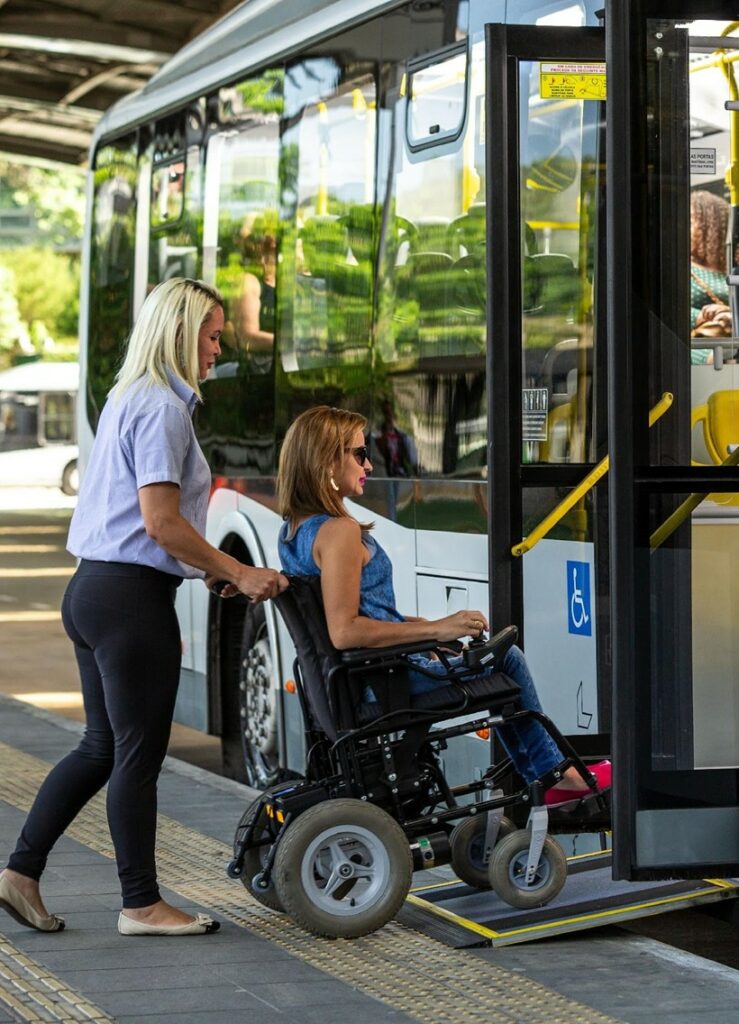
What is accessible and inclusive air and train travel?
Transportation is considered accessible and inclusive when each step of the journey is predictable, safe and barrier-free. Services must be designed to meet the needs of all individuals, regardless of their abilities.
The particularities of air and rail transportation
Air and rail transportation, as well as buses, subways or paratransit, are forms of public transportation. However, they are distinguished by their use primarily for long-distance travel, particularly across large geographic areas such as Québec or Canada.
All modes of public transit have challenges related to the accessibility of infrastructure, vehicles, information and assistance. However, long-distance travel presents additional challenges due to its length and possible border crossings. These challenges include:
- Baggage management
- Reservations
- Boarding and disembarkation procedures
- Access to adapted toilets or to food
- Intermodality, where passengers find themselves in unknown places
The division of responsibilities among the different levels of government in Canada means that accessibility is not always the same between regions. Moreover, the international nature of the standards that govern these industries makes it difficult to implement changes. To ensure true accessibility in air and rail transportation, strong leadership from the authorities is essential. Effective coordination among levels of government and a proactive approach are crucial to overcoming barriers and improving these modes of transportation.
Overview of the situation
Despite strict federal regulations, nearly two-thirds of the 2.2 million persons with disabilities who traveled in 2019 and 2020 encountered barriers on planes and trains. Although consultations were held, the Auditor General of Canada’s report highlights several issues, including a lack of staff training, inadequate complaint management and digital accessibility challenges. The shortcomings do not concern the specific obligations or action plans, but rather their implementation.
On the aviation side, the issues are particularly concerning. The media frequently report incidents involving broken or forgotten mobility aids, as well as cases of mistreatment, especially during boarding procedures. The situation has become so critical that a National Air Accessibility Summit was held in 2024 to address these issues.
In terms of domestic travel in Québec, airlines and railways are subject to much less stringent obligations than at the federal level. This lack of a rigorous framework results in accessibility gaps that make it difficult for persons with disabilities to travel, even on recently commissioned services. EXO commuter trains, especially on the Montréal-Mascouche lines , as well as the Réseau Express Métropolitain(REM), are good examples where the needs of persons with disabilities have been neglected. These findings highlight the urgency of concerted action to improve accessibility and ensure inclusive and respectful travel experiences for all.
Standards and obligations
There are regulatory frameworks to guide organizations towards more inclusive practices. Some are mandatory, while others encourage organizations to go further.
Good practices to strengthen the air and rail transportation component of your action plan
Harmonizing practices across the different territories and modes of transportation is essential to guarantee an accessible transportation chain. Here are some concrete measures to incorporate into your action plans. Strategies are divided between service providers and provincial authorities. Other fact sheets in this guide should also be consulted, such as those covering evacuation, communication or customer service measures.
Available resources
Subsidies
The Ministry of Transport and Sustainable Mobility offers several subsides related to air and rail transportation and for the rail transportation of transit companies. Municipalities may also benefit from a level crossing development subsidy.
Documents
- The Accessible transportation section, Canadian Transportation Agency.
- Improving Transport Accessibility for All: Guide to Good Practice, European Conference of Ministers of Transport.
- Examples of design and safety features to improve railway crossings, Transportation Safety Board of Canada.
- Accessibilité des traversées piétonnes aux passages à niveau [Pedestrian crossing accessibility at level crossings], Cerema publications.
Fact sheet prepared in collaboration with Julie-Anne Perrault, universal accessibility consultant, with feedback from Kéroul, and Mohamed Reda Khomsi (ESG UQAM).








